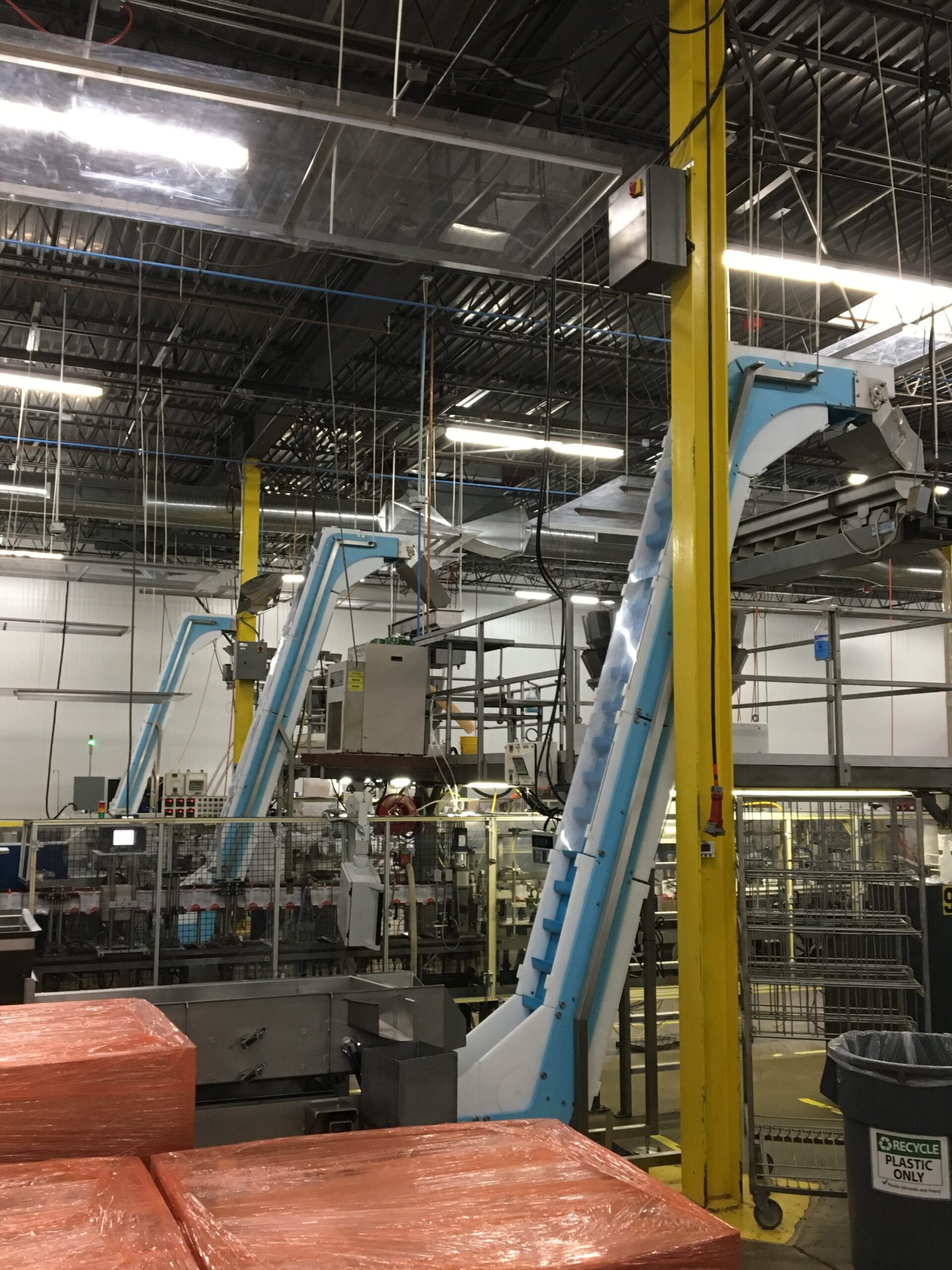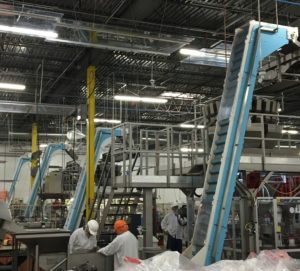Food processing plants aren’t made to sit still. They’re intended to operate. They aren’t making money when they have stopped for any reason. Your job may be to minimize downtime and keep your food processing lines running. Stopping for preventative maintenance and cleaning are necessary. But you still want to minimize the time you are shut down in addition to any unexpected downtime.
Maximize Your Scheduled Downtime
While scheduled downtime is certainly necessary, it’s crucial to reduce that time frame as much as possible. Here are some recommended solutions.
Increase Sanitation Efficiency
Your food processing equipment’s sanitary design is where the battle to capture more uptime really begins. When choosing conveyors, consider equipment that offers easy access for cleaning so that sanitation crews can do a thorough job in as little time as possible. Sanitary conveyors with easy access have been proven to cut cleaning and sanitation times by 50% or more.
Your team can start increasing sanitation efficiency immediately by following 5 sanitation saver tips. Get started by downloading and printing this flyer. Download PDF
Reduce Maintenance Time
When repairs or inspections are necessary during production, seconds count. Your maintenance crew must be able to access equipment quickly and easily. Having equipment that requires minimal tools – no tools is best — can be a huge time and labor savings.
Preventative maintenance checklists for all of your food processing equipment should be accessible and used by your maintenance team. Following processes and utilizing checklists is a proven way to increase efficiencies. Here is a preventative maintenance checklist for your conveyors. Download PDF
Communicate
Coordination between shifts and/or job responsibilities is key. If your teams communicate on a regular basis, then your plant has a better chance of achieving its uptime potential. For instance, should an issue arise during production that could affect sanitation, make sure it’s communicated to the sanitation personnel so they are aware and ready to tackle the issue as quickly as possible.
Reduce Your Unscheduled Downtime
Be prepared. Selecting well-designed equipment and utilizing proven processes and checklists are sure to gain uptime. With a trained staff and a focus on food safety, you can prevent the most common issues from impacting your production window and eliminate unscheduled downtime at your food processing plant.
Preventive Maintenance
The worst uptime thief is one that unexpectedly brings your food processing line to a stop. From broken belts and foreign material contamination to product investigations, anything that must be addressed before production continues can steal time, labor and money.
Preventive maintenance is the key. In a previous article, we identified several situations that can cause excessive belt wear. Unexpected issues happen, so it’s important to be quick to identify and remedy the issue before it requires major unplanned repair.
By maximizing your scheduled downtime and reducing your unscheduled downtime, you are sure to increase your uptime, gain efficiencies and achieve operational excellence in your food processing plant. What will you do with more time in your food processing plant?
Questions You Should Ask Before Purchasing a Sanitary Conveyor
- Solving Packaging Bottlenecks with a DynaClean Vertical Z Conveyor - December 15, 2025
- PMMI 2025: Dynamic Conveyor’s Key Takeaways - December 9, 2025
- A Souper Social Success! - December 2, 2025



